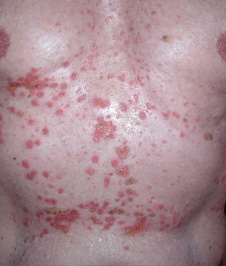Ted Rosen, MD, FAAD, Editor-in-Chief
Off-label pearl
Treatment of Grover disease with dupilumab
Grover disease is a chronic disorder, often refractory to therapy. It involves intense pruritus, especially on the trunk, which may even interfere with sleep. A series of 3 Grover patients experienced marked relief following treatment with dupilumab at standard doses (600 mg loading, 300 mg every other week). To read more: Butler DC, Kollhoff A, Berger T. Treatment of Grover disease with dupilumab. JAMA Dermatol. 2021 Jan 27. doi: 10.1001/jamadermatol.2020.5097.
COVID-19
As a direct result of the COVID-19 pandemic, overall American life expectancy dropped by 1 full year in the first 6 months of 2020. Life expectancy of the Black population declined by 2.7 years, of the Latino population by 1.9 years, and of the White population by 0.8 years. News release by the National Center for Health Statistics, February 18, 2021.
As might be expected, the COVID-19 pandemic has brought a huge increase in journal article submissions on this subject. However, in addition, the pandemic has ushered in a major overall increase in journal submissions on all subjects. Time awarded in furloughs from dermatologic practices coupled with reduced pressure at academic centers for clinical productivity may have resulted in an unprecedented opportunity for engagement in scholarly activities. To read more: Maghfour J, et al. COVID-19 impacts medical journal submissions. Int J Womens Dermatol. 2020; 6(4):255–256.
Classic telogen effluvium may be a common consequence of COVID-19 infection, presenting roughly 3 months after viral disease onset. Telogen effluvium can be seen after both mild and moderate-to-severe forms of COVID-19. To read more: Mieczkowska K, et al. Telogen effluvium: a sequela of COVID-19. Int J Dermatol. 2021;60:122-24.
Pediatric dermatology
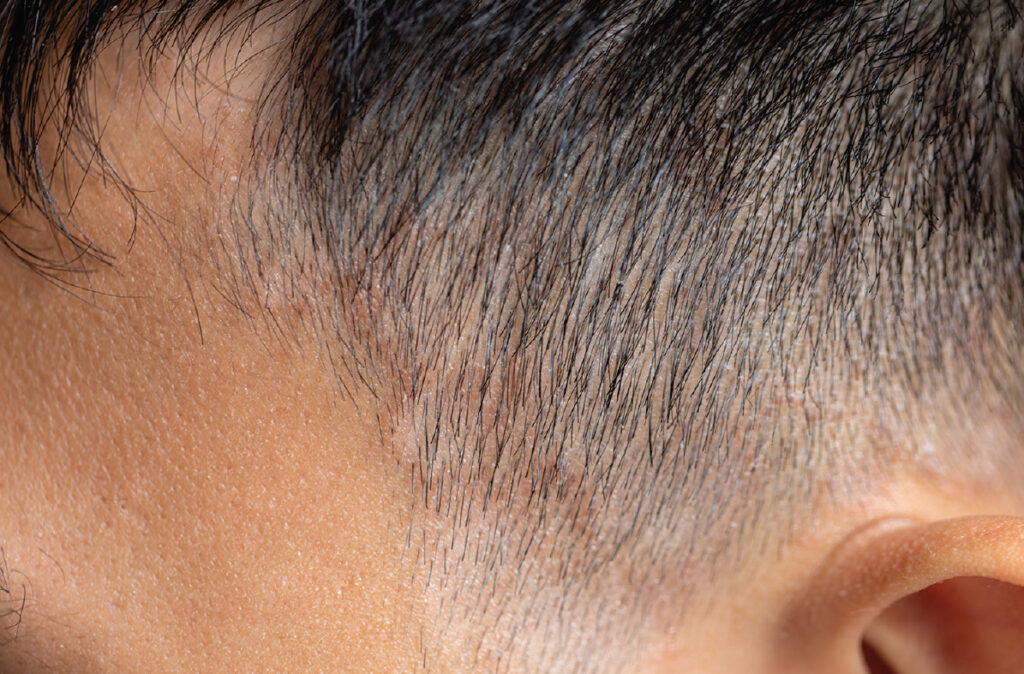
A Canadian study of suspected cases of pediatric tinea capitis demonstrated that the moistened-swab technique of specimen collection was entirely equivalent to the “scrape” method of specimen collection. The swab method is less threatening and less traumatic. To read more: Le M, et al. Efficacies and merits of the cotton swab technique for diagnosing tinea capitis in the pediatric population. J Am Acad Dermatol. 2020;83:920-21.
Infectious diseases
A retrospective, 10-year study on sporotrichosis from India demonstrated a high rate of clinical response (76.8%) to saturated solution of potassium iodide (SSKI) given for a mean of 5 months. 59% of those receiving SSKI experienced a gastrointestinal side effect, most notably metallic taste in the mouth. To read more: Sharma R, et al. The clinico-epidemiological characteristics and therapeutic experience of 152 patients with cutaneous sporotrichosis: a 10-year retrospective study from India. Int J Dermatol. 2021;60:99-106.
An analysis of 2285 patients receiving prescriptions for efinaconazole 10% to treat onychomycosis showed am alarmingly low adherence rate, with only 25.6% of the initial prescriptions being filled. Those who did not fill the prescription tended to be younger and were faced with a greater out-of-pocket expense. To read more: Wu AG, et al. Retrospective study of factors affecting medication adherence in patients prescribed efinaconazole 10% solution for onychomycosis. J Am Acad Dermatol. 2021;84:208-210.
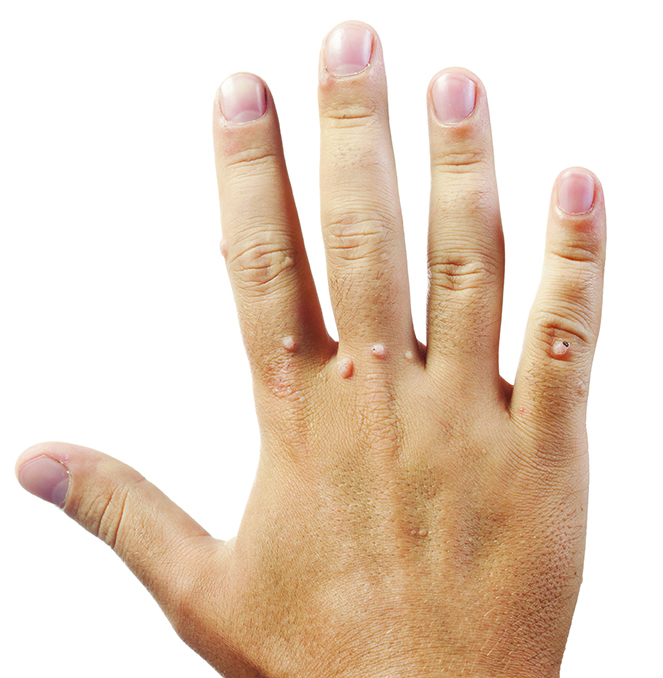
A retrospective analysis of largely cryotherapy-resistant warts, 70% of which were on the hands, patients receiving an average of 3.4 treatments of intralesional cidofovir had a 97.6% resolution rate. The cidofovir was diluted to a concentration of 15 mg/mL, and injections were given about every 4 weeks. Local anesthesia was obtained. To read more: Anshelevich EE, et al. Intralesional cidofovir for treatment of recalcitrant warts in both immunocompetent and immunocompromised patients: A retrospective analysis of 58 patients. J Am Acad Dermatol. 2021;84:206-207.
In a comprehensive systematic review of intralesional bleomycin, the authors found that, although studies were of low methodological quality, there was evidence for this modality in the management of otherwise recalcitrant warts. Bleomycin (1 U/mL) was most often injected every 2-4 weeks. To read more: Bik L, et al. Efficacy and tolerability of intralesional bleomycin in dermatology: a systematic review. J Am Acad Dermatol. 2020;83:888-903.
Among a French cohort of 206 secondary syphilis patients (97% male, 95% men who have sex with men), oral lesions were not uncommon (18%). The most common oral manifestations included erosive to ulcerative mucosal lesions and mucous patches of the tongue. Oral lesions were the only sign of syphilis in some cases. To read more: Lampros A, et al. Oral forms of secondary syphilis: an illustration of the pitfalls set by the great imitator. J Am Acad Dermatol. 2021;84: 348-53.
Rheumatologic diseases
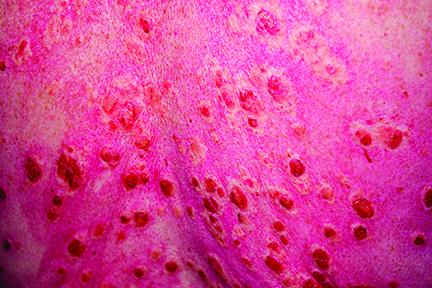
As expected, observed-to-expected mortality rates are higher in patients with systemic lupus erythematosus compared to the general population. However, a recent analysis disclosed that mortality rates are especially high for those of Asian and Hispanic ethnicity, particularly among women. To read more: Gianfrancesco MA, et al. Mortality among minority populations with systemic lupus erythematosus, including Asian and Hispanic/Latino persons—California, 2007–2017. MMWR. 2021; 70(7);236–239.
Cosmetic dermatology
A case of non-tuberculous mycobacterial infection following neurotoxin injection reminds us that these ubiquitous organisms can lead to distressing results after cosmetic manipulations. To read more: Kandhari R. Non‐tuberculous mycobacterial infection post botulinum toxin injection. J Cosmet Dermatol. 2021; February 22. doi: 10.1111/jocd.14018 (Editor’s Note: such infections are notoriously difficult to treat, requiring prolonged administration of multiple agents concurrently.)
In a small (n = 20) paired lesion comparison study, trichloroacetic acid 35% (TCA) applied to test sites of patchy alopecia areata was more efficacious and better tolerated than application of 88% phenol. TCA was applied every 3 weeks for 9 weeks. The authors speculate that TCA wounding initiates production of growth factors and cytokines that may induce hair regrowth. To read more: Mahgoub D, et al. Clinical and trichoscopic evaluation of trichloroacetic acid 35% vs phenol 88% peels in treatment of alopecia areata. J Cosmet Dermatol. 2021;20:143-49.
Psoriasis

A large retrospective analysis revealed that pregnancy outcomes (normal birth, stillbirth, congenital malformations) among women with and without psoriasis were equivalent. Exposure to various biologic drugs during pregnancy also did not alter expected pregnancy outcomes. To read more: Kimball AB, et al. Pregnancy outcomes in women with moderate-to-severe psoriasis from the Psoriasis Longitudinal Assessment and Registry (PSOLAR). JAMA Dermatol. 2021; February 3. doi:10.1001/jamadermatol.2020.5595
Atopic dermatitis
In a somewhat counter-intuitive finding, a study determined that infant exposure to farm animals is associated with reduced incidence of early-onset atopic dermatitis. In fact, the more intense and diverse the animal exposure, the greater the reduction in atopic dermatitis risk. To read more: Steiman CA, et al. Patterns of farm exposure are associated with reduced incidence of atopic dermatitis in early life. J Allergy Clin Immunol. 2020;146(6):1379-1386.
Dupilumab therapy for moderate-to-severe atopic dermatitis (AD) often led to reduction in AD-associated anxiety and depression as well as improvements in objective measurements of quality of life.To read more: Cork MJ, et al. Dupilumab improves patient-reported symptoms of atopic dermatitis, symptoms of anxiety and depression, and health-related quality of life in moderate-to-severe atopic dermatitis: analysis of pooled data from the randomized trials SOLO 1 and SOLO 2. J Dermatolog Treat. 2020;31(6):606-614.
Contact dermatitis
Personal protective equipment may cause facial dermatoses. A systematic review from the American Contact Dermatitis Society revealed the following as likely problems: true allergic contact dermatitis from elastic straps, glue and formaldehyde released from mask fabric; irritant contact dermatitis on the cheeks and nasal bridge from pressure and friction; and acneiform eruptions related to prolonged mask wear and occlusion. To read more: Yu J, et al. Occupational dermatitis to facial personal protective equipment in health care workers: a systematic review. J Am Acad Dermatol. 2021;84:486-94.
Hair and nails
Serial laboratory studies were performed on 944 healthy adults who were prescribed 12 weeks of oral terbinafine for onychomycosis. Test abnormalities were uncommon. When abnormalities did occur, they were mild, generally resolving by conclusion of therapy, and mostly seen in those over age 65. To read more: Wang Y. Retrospective analysis of laboratory abnormalities in patients prescribed terbinafine for onychomycosis. J Am Acad Dermatol. 2021;84:497-99. (Editor’s note: yet another publication suggesting that laboratory testing during terbinafine administration is not warranted in most cases.)
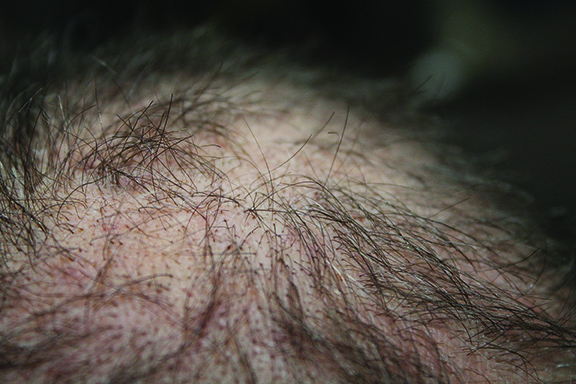
In clear-cut cases of telogen effluvium, there is limited evidence supporting the utility in ordering serum ferritin or iron, Vitamin D or zinc levels, and TSH. Even when the rarely detected abnormalities are corrected, telogen effluvium does not typically resolve. To read more: Kakpovbia E, et al. Laboratory testing in telogen effluvium. J Drugs Dermatol. 2021;20:110-111.
Hidradenitis suppurativa
Using a cloud-based aggregate database representing about 15% of the US population, the authors looked for ocular co-morbidities for hidradenitis suppurativa (HS). In the database of 31,400 HS patients, the researchers found that episcleritis, followed by keratitis and uveitis, were the most common co-morbid ocular disorders. Bottom line: consider asking HS patients if they have eye/visual complaints. To read more: Conic RRZ, et al. Burden of ocular comorbidities in patients with hidradenitis suppurativa. JAMA Dermatol. 2021;157(2):226-227.
A 3-year, cross-sectional German study of nearly 1800 hidradenitis patients disclosed that 83.6% reported some degree of pain on any given day. Pain intensity correlated well with disease severity (Hurley staging) and with the presence of multiple active disease sites. To read more: Krajewski PK, et al. Pain in hidradenitis suppurativa: A cross-sectional study of 1795 patients. Acta Derm Venereol. 2012; January 5; doi: 10.2340/00015555-3724 (Editor’s note: Effective pain management in HS patients may require appropriate referral.)
Cutaneous oncology, surgery, and lasers
A systematic review reminds us that intralesional 5-Fluorouracil remains a viable option for the management of nonmelanoma skin cancer. The majority of injections were given weekly, using 50 mg/ml 5-FU concentration. Mean clearance rates were: squamous cell carcinoma 87%, basal cell carcinoma 91.4%, and keratoacanthoma 74.5%. This might be considered in patients with multiple tumors or many co-morbidities, patients with “surgical fatigue,” and patients whose lesions are difficult to approach surgically. To read more: Maghfour J, et al. Intralesional 5-Fluorouracil for treatment of non-melanoma skin cancer: a systematic review. J Drugs Dermatol. 2021;20:192-98. (Editor’s note: Intralesional 5-FU for NMSC is not a new idea. I reported a case series in 1980!)
General dermatology
Patients with scabies are more likely to scratch during their medical examination than patients with other pruritic dermatoses. In this prospective, short-term, Belgian observational study, 40% of scabies patients were noted to scratch themselves during the encounter, compared to only 13% of patients with itching due to other underlying disorders. To read more: Hoai X, et al. Prevalence of scratching during examination among patients with scabies and among patients with other pruritic dermatoses. Int J Dermatol. 2021;60:70-72.
In a retrospective meta-analysis including 13 studies and more than 500 patients, the results of using topical steroids was found equal to those of using topical calcineurin inhibitors with regards to vitiligo repigmentation. This equivalency was seen in adults and children alike, for 50% and 75% re-pigmentation. To read more: Chang HC, et al. The effectiveness of topical calcineurin inhibitors compared with topical corticosteroids in the treatment of vitiligo: A systematic review and meta-analysis. J Am Acad Dermatol. 2020;82:243-245.
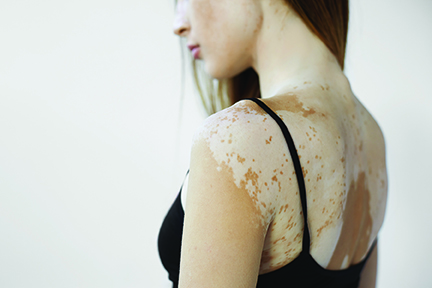
A multicenter, randomized, double-blind, phase 2 study for adult patients with vitiligo found that 1.5% ruxolitinib cream, applied once or twice daily, led to significant repigmentation at both facial and non-facial sites. To read more: Rosmarin D, et al. Ruxolitinib cream for treatment of vitiligo: a randomised, controlled, phase 2 trial. Lancet. 2020;396(10244):110-120.
An interesting study of 313 patients recruited from academic dermatology clinics concerning how well they understand terms commonly used during a dermatology encounter. Higher educational attainment and prior experience working in the medical field correlated with better understanding. Terms that gave survey respondents the most difficulty included “excision,” “metastasis,” and “pathology.” To read more: Neill BC, et al. Determining patient understanding of commonly used dermatology terms: a multicenter, cross-sectional survey. J Am Acad Dermatol. 2020;83:933-35.
Otic lichen planus (LP), though uncommon, should be suspected in patients with known LP and recurrent ear inflammation. Timely recognition and aggressive management are critical to prevent progressive and potentially permanent hearing loss. A case is presented of mycophenolate mofetil (2000 mg/day) as an effective treatment for recalcitrant, biopsy-proven otic LP. To read more: Guo LN, et al. Severe recalcitrant otic lichen planus treated with mycophenolate mofetil. JAAD Case Rep. 2021; 8:1-3. (Editor’s note: I have personally used MMF to treat biopsy-proven esophageal LP)
Angiokeratomas of Fordyce may be effectively treated using topical application of compounded 0.25% rapamycin cream. Transient mild burning may accompany application, but rapidly resolves. To read more: Bell KA, et al. Treatment of angiokeratomas of Fordyce with topical rapamycin 0.25% cream. JAAD Case Rep. 2021;8:50-52.
Acne
Data extracted from a national sample of the US population showed that acne patients receiving isotretinoin had fewer symptoms of depression and less overall psychologic distress than a comparable group receiving antibiotics. To read more: Hekmatjah J, et al. Differences in depression and distress between acne patients on isotretinoin vs oral antibiotics. J Drugs Dermatol. 2021;20:172-77.
Drugs and devices
Pulsed dye laser remains the standard of care for port-wine birthmark. Optimal results are seen when treatment is initiated at an early age. Risk of dyspigmentation and atrophic scarring is higher when laser therapy is performed on skin of color. Lower energy densities, less pulse overlap and greater intraprocedure cooling are recommended in darker skin types. To read more: Sabeti S, et al. Consensus statement for the management and treatment of port-wine birthmarks in Sturge-Weber Syndrome. JAMA Dermatol. 2021;157:98-104

